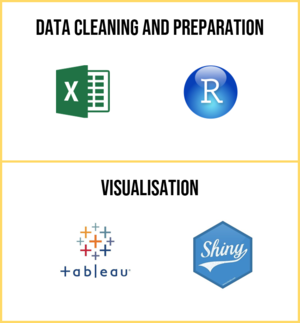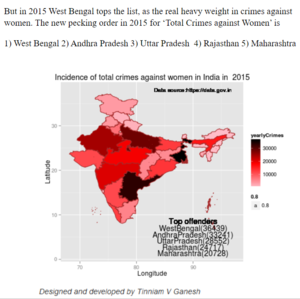IS428-AY2019-20T1 Group09-Proposal
<--- Go Back to Project Groups
Contents
PROBLEM STATEMENT
According to the Thomson Reuters Foundation Annual Poll, India is ranked as the world’s most dangerous country for women. This is not surprising, as India has had a long-standing history of violence against women, which is deeply rooted in certain cultural practices such as female infanticide and acid attacks.
Even with the increasing public outcry regarding such discrimination and the enactment of laws protecting women, the number of crimes committed against women is increasing steadily over the years.
MOTIVATION
India is one of the world’s fastest growing economies. It is currently the seventh richest country in the world, and is projected to be the third largest economy in the world. Despite its rapid growth and development, women in India still suffer from long-standing gender inequality and are the victims to brutal and inhumane crimes. Hence, there is a need to analyse various socioeconomic factors to garner insights on the root causes for crimes against women to understand why this phenomenon is so.
OBJECTIVES
Our objectives of this project are as follows:
- Provide an overview of the issue of crimes against women in India
- Draw comparisons to study the differences in crime rates between different states
- Study the effect of various socioeconomic factors on the number of crimes committed against women
We hope to achieve these objectives by developing interactive visualisations which can help us to understand the increasing trend of crimes against women, and what factors may contribute to such crime rates.
DATA SOURCES
We have obtained the following datasets for this research:
| Dataset/Source | Data Attributes | Purpose |
|---|---|---|
(Click to View Data) District-wise Crimes Committed Against Women, 2014 (Click to View Data) |
|
|
(Click to View Data) dstrCAW_1 (2001-2012) (Click to View Data) |
|
|
(2007 - 2018) |
|
|
LITERATURE REVIEW
| Reference of Other Interactive Visualization | Learning Point |
|---|---|
Title: Revisiting crimes against women in India Source:https://www.r-bloggers.com/revisiting-crimes-against-women-in-india/ |
|
Title: Foreign tourists visiting Korea by 2015 |
|
Title: Most visited tourism attractions in South Korea 2015 |
|
CONSIDERATION & VISUAL SELECTION
PROPOSED STORYBOARDS
TECHNOLOGIES
The tools we will be using for this Project is as follows:

CHALLENGES
| Challenges | Mitigation Plan |
|---|---|
|
Lack of proficiency in using R and R Shiny |
|
|
District Crime Rates are in separate files, with different data attributes. |
|
|
Difficulty in understanding some of the data attributes due to its local context, such as the different acts for protection against women found in some of our datasets. |
|
|
Difficulty in finding socioeconomic factors by state level |
|
|
The socioeconomic factors identified may not be indicative of the crime rate against women in India, as there may not be a relationship between the two. |
|
TIMELINE
COMMENTS

